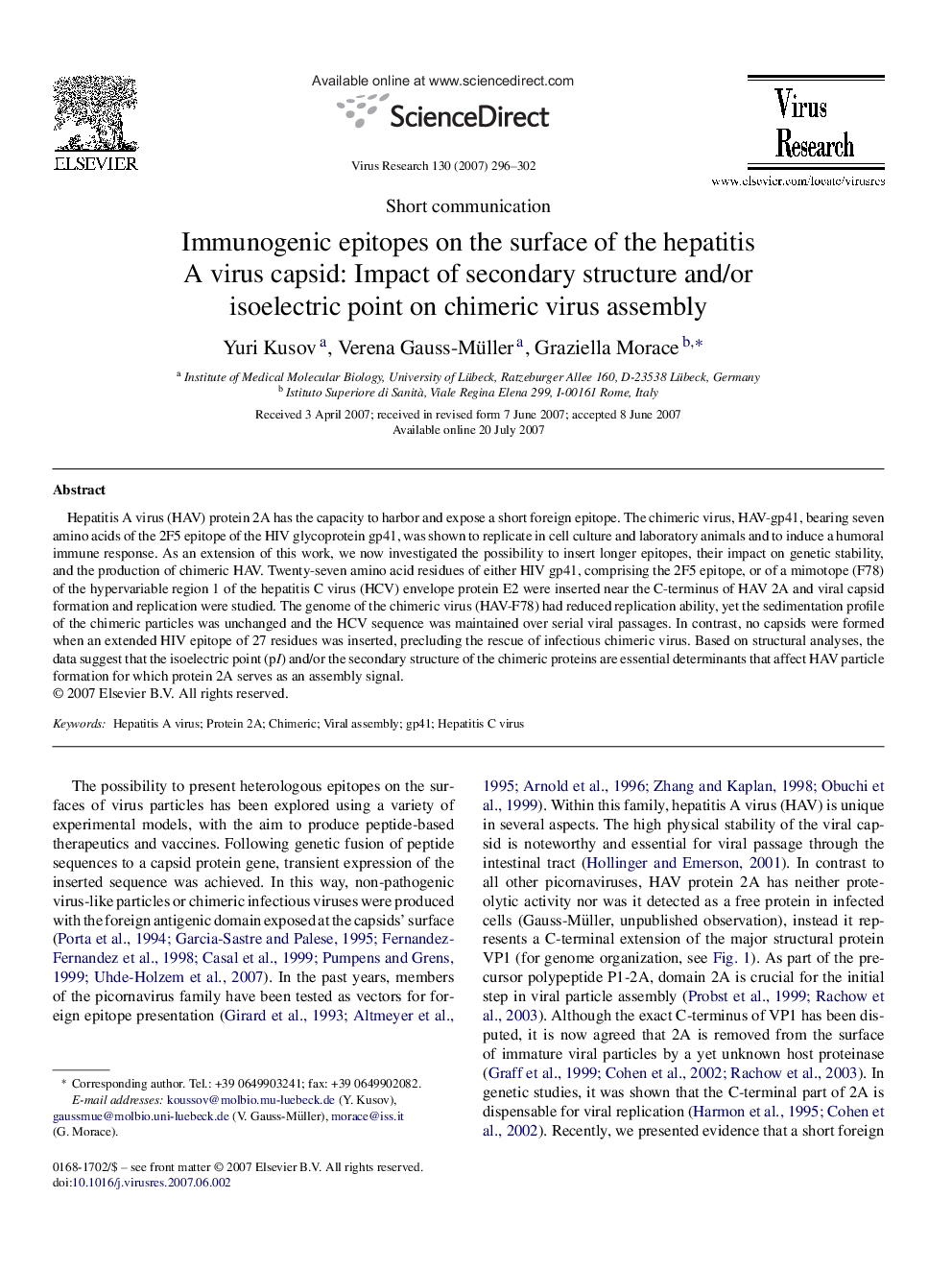| Article ID | Journal | Published Year | Pages | File Type |
|---|---|---|---|---|
| 3430677 | Virus Research | 2007 | 7 Pages |
Hepatitis A virus (HAV) protein 2A has the capacity to harbor and expose a short foreign epitope. The chimeric virus, HAV-gp41, bearing seven amino acids of the 2F5 epitope of the HIV glycoprotein gp41, was shown to replicate in cell culture and laboratory animals and to induce a humoral immune response. As an extension of this work, we now investigated the possibility to insert longer epitopes, their impact on genetic stability, and the production of chimeric HAV. Twenty-seven amino acid residues of either HIV gp41, comprising the 2F5 epitope, or of a mimotope (F78) of the hypervariable region 1 of the hepatitis C virus (HCV) envelope protein E2 were inserted near the C-terminus of HAV 2A and viral capsid formation and replication were studied. The genome of the chimeric virus (HAV-F78) had reduced replication ability, yet the sedimentation profile of the chimeric particles was unchanged and the HCV sequence was maintained over serial viral passages. In contrast, no capsids were formed when an extended HIV epitope of 27 residues was inserted, precluding the rescue of infectious chimeric virus. Based on structural analyses, the data suggest that the isoelectric point (pI) and/or the secondary structure of the chimeric proteins are essential determinants that affect HAV particle formation for which protein 2A serves as an assembly signal.
